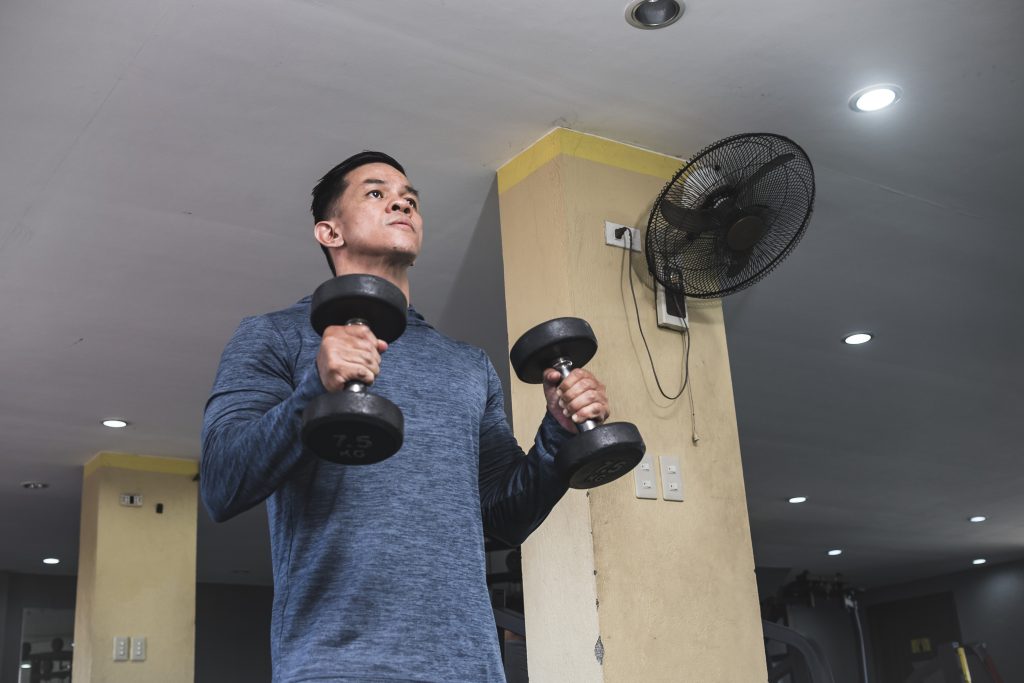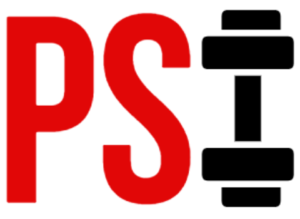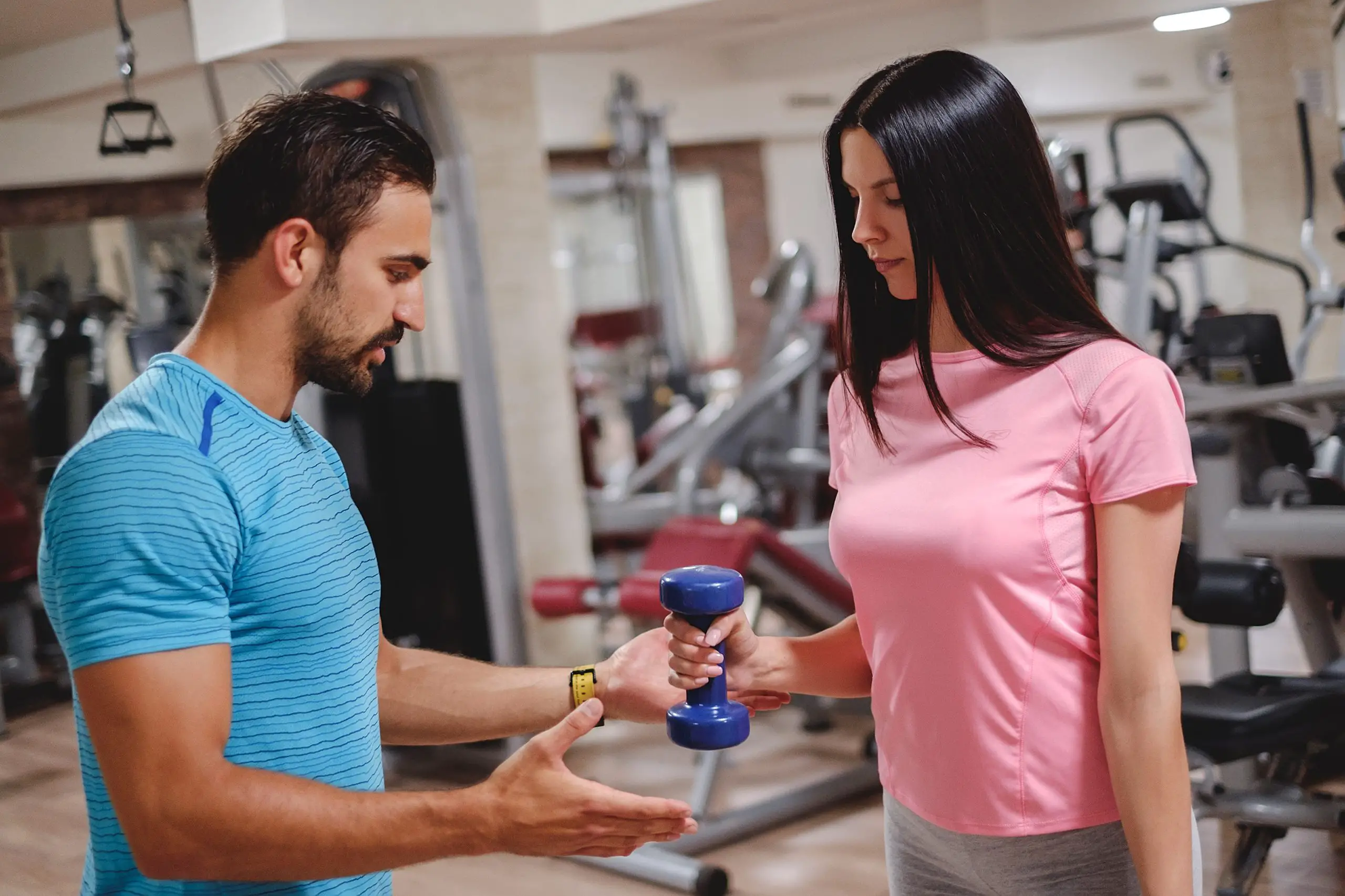If you’re looking to build your biceps and strengthen your arms, then learning how to do hammer curls correctly is essential.
Hammer curls are a great exercise for toning and strengthening your biceps, as well as improving shoulder stability and posture. These curling movements target the short head of the biceps, making them a great accessory exercise for your upper body workout.
Executing hammer curls correctly is key to getting the best results and avoiding injuries. With proper form, you can ensure that you’re working the right muscles in the right way. In this article, we’ll go through each step of the process, so you can master these curls and benefit from their muscle-building benefits.
What Are Hammer Curls?
Hammer curls are a popular exercise in the weightlifting world, and for good reason. They help to effectively target your biceps, and are particularly useful for defining these muscles.
When done correctly, hammer curls will help you to improve your biceps strength and size. Here’s how it works: the movement is similar to a regular bicep curl, except that the palms of your hands face each other throughout the entire exercise. This reduces strain on your wrists and shoulders and more effectively works the biceps.
To start, hold a dumbbell in each hand with a neutral grip (palms facing your body). Keep your elbows close to your sides and curl the dumbbells up towards your shoulders in slow controlled movements. Pause at the top before slowly lowering them back down. Be sure not to swing or bounce while completing hammer curls as this can lead to injury.
Follow this guide and you’ll be on track for stronger biceps in no time!

Benefits of Doing Hammer Curls
Hammer curls are one of the most effective and efficient exercises for isolating and targeting the biceps muscles. Doing hammer curls helps to build both strength and size in your biceps muscles, as well as forearms. When done correctly, hammer curls also help to improve balance and coordination between the two sides of your body, as well as overall coordination.
The benefits of hammer curls extend beyond just building muscle. These targeted exercises also help to improve posture by improving the strength in your upper back and shoulders which in turn helps you to keep better form when lifting heavier weights. They also help to increase grip strength which is useful for a range of different sports and activities.
Finally, hammer curls can be used as part of an overall arm workout routine that works to build both strength and size in the biceps muscles simultaneously. By combining different rep ranges, you can achieve optimal gains from this exercise while still ensuring that you remain safe throughout the workout session.
How to do Hammer Curls
Proper form is essential when performing hammer curls to ensure that you achieve maximum gains. Here are the key steps to follow:
- Stand upright with a dumbbell in each hand, arms by your sides and palms facing inwards
- Engage your core and squeeze your shoulder blades together
- Keeping your elbows at your sides, curl the dumbbell upwards until it reaches chest level
- Hold for a second and then slowly lower the weight back down in a controlled manner
- Repeat for desired number of repetitions
When performing hammer curls, it is important to avoid swinging or jerking the weights, as this can potentially lead to injury or muscle strains. Focus on keeping your movements slow and controlled whilst maintaining good posture throughout each repetition. Additionally, ensure that you are not arching your back as you curl – if needed practice in front of a mirror so that you can monitor your position.
Here’s a good demonstration video from Howcast:
Tips for Doing Hammer Curls
Hammer curls are a great way to build muscle and strength in your biceps. However, as with any exercise, it is important to practice proper form and technique in order to maximize your gains. Here are a few tips to keep in mind when doing hammer curls:
Elbows
Make sure that your elbows remain stationary throughout the entire movement – do not allow them to move back and forth or side to side. Doing so will take away from the effectiveness of the exercise and can put unwanted strain on other parts of your body.
Range of Motion
Focus on maintaining a full range of motion when doing hammer curls. Let your arms extend fully at the bottom of each rep, and slowly curl up using controlled movements so that they come close to touching your shoulders at the peak of each rep. Doing so will ensure that you are engaging all areas of your biceps properly and getting maximum gains from the exercise.
Don’t Swing
Using momentum to move the weight isn’t helping you. Instead, use a slow and controlled pace and keep tension on the muscles the entire rep. Make sure you are focused on the negative (the lowering of the weight) and don’t allow the weight to simply “drop” back down to your side.
Variations on the Hammer Curl Exercise
The hammer curl is a great exercise to help develop strength and shape in your biceps, but there are some variations you can use to further challenge yourself and maximize your workout gains.
Alternating Hammer Curls
Alternating hammer curls is a bit different from regular hammer curls, in that you lift one arm at a time. For example, you can start with your left arm and lift until your elbow is at 90 degrees, then lower it back down and repeat with the right arm. This variation helps build balanced muscle strength in each arm and mimics the movements we make in everyday life.
Cross Body Hammer Curl
A cross-body hammer curl, also known as a cross-body dumbbell curl or an across-the-body hammer curl, is a variation of the traditional hammer curl exercise. This exercise targets the biceps brachii, brachialis, and brachioradialis, as well as the forearm muscles, just like the standard hammer curl. However, the cross-body motion places additional emphasis on the long head of the biceps and engages the core muscles for stabilization.
To perform a cross-body hammer curl:
Stand with your feet shoulder-width apart, holding a dumbbell in each hand using a neutral grip (palms facing your body).
Keep your elbows close to your body and start with one arm.
Slowly curl the dumbbell across your body toward the opposite shoulder, maintaining the neutral grip.
As you lift the dumbbell, keep your elbow steady and avoid swinging or using momentum.
Once the dumbbell reaches the opposite shoulder, slowly lower it back to the starting position.
Repeat the movement with the other arm.
Performing the exercise in a controlled manner and alternating arms will help you maintain proper form and get the most out of the cross-body hammer curl.
Here’s an article all about Crossbody hammer curls, if you would like to learn more.
One-Arm Hammer Curl
To move past alternating hammer curls, try the one-arm hammer curl. This variation requires more focus and stabilization through the core muscles to maintain an upright posture during the exercise. Start by holding a dumbbell in one hand with an overhand grip, bend your elbow and keeping it close to your body while simultaneously rotating the dumbbell until it’s parallel to the floor as you curl it up towards your shoulder. Slowly lower back down for 1 rep.
Rotating Hammer Curl
Rotating hammer curls focus on building strength throughout all angles of motion – both internally and externally rotating – allowing for better contraction of the bicep as well as shoulder girdle muscles firing together. Start with both arms extended at shoulder height, palms facing outwards; then simultaneously bring both arms inward while rotating them so that your palms face each other as you curl the weights up towards each shoulder individually. Lower them back down slowly for 1 rep.
Here’s a video from Mind Pump TV where he demonstrates a seated hammer curl:
For more variations on hammer curls, check out the PSI Ultimate Guide to Hammer Curls.
Hammer Curl Workout Routine Ideas
Getting creative with your hammer curl exercises is a great way to maximize and challenge your gains. Here are a few ideas to get you started.
5 Rep Maxes
For a real test of your strength, try 5 rep maxes. Work up to the heaviest weight you can handle for 5 full reps and then take a few minutes rest before trying again. Over time, you’ll be able to increase the weight and continue setting new strength records. Record your progress in a log book so you can look back and see how far you’ve come.
Supersets
Supersets are sets of two or more exercises performed back-to-back with no rest in between them. For an effective superset, pair hammer curls with any other exercise that works the same muscle group, such as triceps kickbacks or preacher curls. Complete 8 – 10 reps of each exercise then rest for 2 minutes before starting the next set. Repeat this three times for best results.
Isometric Holds
Adding isometric holds to your hammer curl workouts will work on your muscular endurance and strength at the same time. After completing 8 – 10 reps of regular hammer curls, hold the curl at its highest point for 5 seconds before releasing it slowly over 4 seconds – this is one repetition. Complete 4 sets of 10 reps for maximum benefit from this exercise.
Conclusion
In conclusion, hammer curls offer an effective way to build size and strength in your biceps and forearms. To do them correctly, maintain a strong grip with your palms facing each other, squeeze your biceps as you lift the weight, pause for a second at the top, and then slowly lower the weight back down. Make sure to avoid swinging and to keep your elbows steady. If done correctly, you can expect to see an increase in your biceps and forearm strength.
Thanks for reading! Time to go Pump Some Iron!


